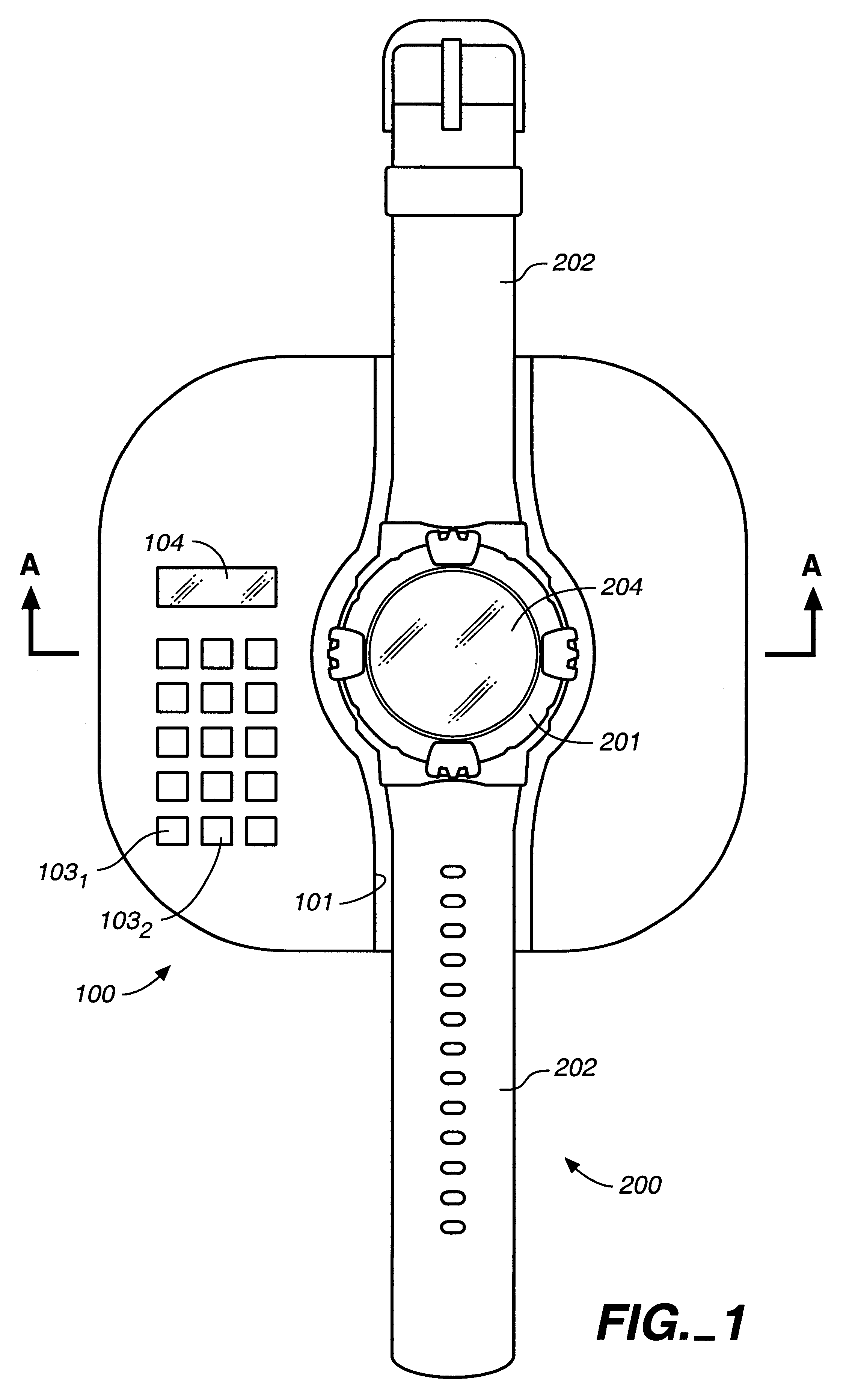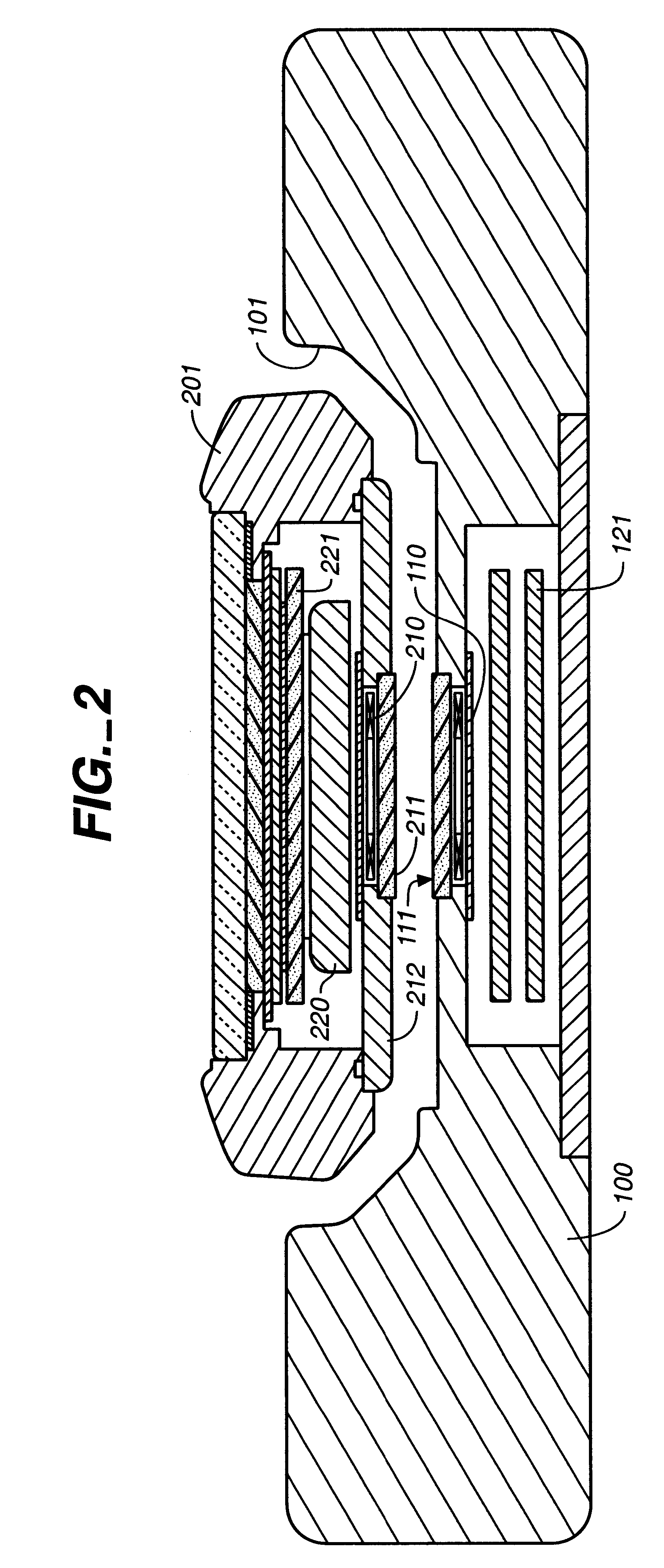Electronic device, control method for electronic device, recharge-rate estimating method for secondary battery, and charging control method for secondary battery
a technology of electronic devices and control methods, applied in the direction of electric winding, instruments, horology, etc., can solve the problems of waste of power, difficulty in providing the above positional relationship, and water tightness at the point of watertightness
- Summary
- Abstract
- Description
- Claims
- Application Information
AI Technical Summary
Problems solved by technology
Method used
Image
Examples
first embodiment
[1.7] Modifications of First Embodiment
The above-described first embodiment can be modified as follows.
[1.7.1] First Modification
While in the first embodiment the data transfer is performed only in one direction from the electronic watch 200 to the station 100, it is a matter of course that data may be transferred in an opposite direction from the station 100 to the electronic watch 200. When data is transferred to the electronic watch 200, the station 100 executes modulation in accordance with the data to be transferred, whereas the electronic watch 200 executes demodulation in match with the modulation scheme. In such a case, well-known techniques can be used to execute the modulation and the demodulation.
[1.7.2] Second Modification
While in the first embodiment the position offset and the absence of the electronic watch are indicated by the display unit 104 provided on the side of the station 100, it is a matter of course that those conditions may be indicated by the display unit ...
second embodiment
[2] Second Embodiment
In the first embodiment, the position offset between the station side coil 110 and the watch side coil 210 is detected by comparing the current (charging current) flowing through the watch side coil 210 with the predetermined threshold. As shown in FIG. 15, however, the current flowing through the watch side coil 210 is reduced with an increase in battery voltage of the secondary battery 220. Depending on actual conditions, therefore, it cannot be often determined whether a current reduction is caused by the position offset or a voltage increase of the secondary battery.
In view of the above, this second embodiment intends to more precisely determine the presence of the position offset based on the charging current and the voltage of the secondary battery.
[2.1] Electrical Construction of Electronic Watch
An electronic watch of the second embodiment will now be described with reference to FIG. 16.
Similar components in FIG. 16 to those of the electronic watch of the...
third embodiment
[3] Third Embodiment
A third embodiment of the present invention will now be described.
[3.1] Premise
A manner of deciding the charging time in this third embodiment will be briefly described prior to a detailed description.
First, FIG. 29 is a graph showing a charge / discharge characteristic of a general secondary battery. As shown in FIG. 29, the terminal voltage of the secondary battery is substantially constant in the charge mode. Further, as mentioned above, the terminal voltage of the secondary battery in the charge mode does not represent a true value.
That point is described with reference to FIG. 31. Generally, because a secondary battery has an internal resistance Re, a voltage Evc resulted from adding the product of the internal resistance Re of the secondary battery and a charging current Ei to a true voltage Evd of the secondary battery is detected in the charge mode.
Consider here that the secondary battery is charged with a constant voltage E. In this case, the charging curr...
PUM
 Login to View More
Login to View More Abstract
Description
Claims
Application Information
 Login to View More
Login to View More - R&D
- Intellectual Property
- Life Sciences
- Materials
- Tech Scout
- Unparalleled Data Quality
- Higher Quality Content
- 60% Fewer Hallucinations
Browse by: Latest US Patents, China's latest patents, Technical Efficacy Thesaurus, Application Domain, Technology Topic, Popular Technical Reports.
© 2025 PatSnap. All rights reserved.Legal|Privacy policy|Modern Slavery Act Transparency Statement|Sitemap|About US| Contact US: help@patsnap.com



